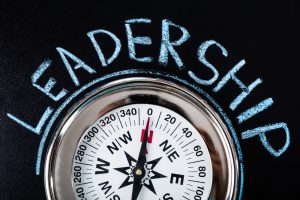Today, we continue ahead on the theme of innovation in K-12 education. Earlier this month, the 2017 SXSWedu Conference and Festival in Austin brought about a number of discussions on how to foster innovation in learning, bringing together experts from both K-12 and higher ed communities on pertinent topics: expanding leadership in public schools, improving equity and access to education, innovating learning spaces, and supporting a new generation of teachers. Check out some of the highlights from the SXSWedu conference below.
The Next Phase of Virtual Reality Technology
The big question remains: Will students always end up being the consumers, and not creators, of content with popular VR technologies like Google Cardboard and Oculus Rift? The opportunity for students and teachers to become creators is not far off. A few efforts were presented at SXSWedu, showcasing how immersive images and 360-degree videos can be used to enrich student learning. Panoform is a free service created by researchers at North Carolina State University’s Immersive Experience Lab. It’s an easy, cheap way to create content for VR – students use crayons to draw a design onto a special grid, and then convert the image into 3D for viewing with Google Cardboard. At Barnard College, their Instructional Media Services department provides students with the kits to capture, edit, and display pictures and video in 360 degrees.
New York City’s Big Bet on Equity
The most popular talk during SXSWedu was centered on New York City Schools and their approach to serving students from all backgrounds. They talked about the city’s universal pre-K, offering free full-day programs to more than 150,000 four-year-olds, as a push toward a strong foundation in reading before they reach the second grade. They have expanded access to computer science and AP courses, the latter of which is available to students in every zip code of New York City.
One of the keys to their success, according to Chancellor Carmen Fariña, is building a forum between teachers of different schools across the city, because there are the same expectations for students whether it’s Park Slope or Central Brooklyn. As a former teacher and principal, Fariña is still quite hands on in her schools every week, maintaining rapport with educators and school leaders, breaking down silos, and promoting frequent collaboration across the city. Additionally, under her guidance, the district has created workshops for parents and direct communications in several languages (including Urdu, Arabic, Hindu) to keep engaged with their local communities. Recommended Reading: Interview with NYC Chancellor Carmen Fariña
How to Support a New Generation of Educators
There was one particular panel, moderated by The Teacher’s Guild Director Molly McMahon, where a district teacher and two K-12 administrators shared their insights on letting teachers drive innovation at their schools. According to the panelists, innovation should be looked at broadly – considering all the ways that educators can embrace creativity and a new way of thinking in order to problem solve for their students. Voted Teacher of the Year at Gwinnett County Public Schools, Valerie Lewis shares some of her first-hand experience, including a living museum for Black History Month.
All three panelists agree that the best district leadership should foster a holistic learning environment that will motivate students and teachers. While administrators face their own hurdles in scaling things that work on a smaller network, the answer is not more regulation. It’s critical for them to empower teachers with autonomy and access to professional development. Another important strategy for high school principals could be to create Future Teachers Clubs and other programs to cultivate future educator pipelines; for instance, recognizing students in underserved communities who might become valuable mentors (and some day, teachers).
